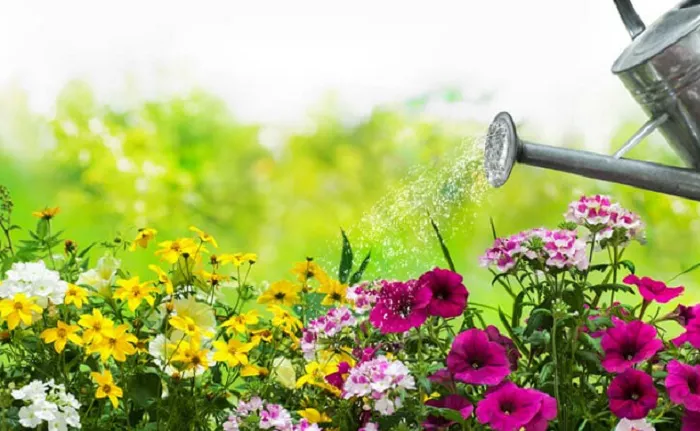When planning a week-long vacation, ensuring your outdoor plants receive adequate water is crucial. The right watering strategy can mean the difference between a garden that thrives and one that withers. This article explores practical and effective methods to keep your plants hydrated while you’re away, ensuring they remain healthy and vibrant.
Preparation Before Leaving
Assess Your Garden
Before implementing any watering solution, take a moment to assess your garden. Consider factors such as plant types, soil conditions, and weather forecasts. Different plants have varying water needs, and understanding these will help tailor your watering plan. For instance, drought-tolerant plants like succulents require less water compared to moisture-loving perennials.
Group Plants by Water Needs
Organize your plants into groups based on their water requirements. This makes it easier to set up efficient watering systems. For example, place potted plants that need frequent watering close to a water source or in a shaded area to reduce evaporation. Grouping helps streamline watering efforts and ensures each plant receives the right amount of moisture.
Watering Systems and Techniques
Self-Watering Containers
Self-watering containers are a game-changer for gardeners who travel frequently. These pots have a reservoir at the bottom that holds water, which is then absorbed by the plant’s roots through a wicking system. Simply fill the reservoir before you leave, and the plant will draw water as needed. This method is ideal for container plants and can last up to a week, depending on the size of the reservoir and the plant’s water needs.
Drip Irrigation Systems
Drip irrigation is a reliable way to keep your plants watered while you’re away. This system delivers water directly to the plant’s roots through a network of tubes and emitters. You can set up a timer to control the watering schedule, ensuring your plants receive water at regular intervals. Drip irrigation is efficient, conserves water, and can be customized to fit your garden’s layout. It’s particularly useful for vegetable gardens and flower beds.
Soaker Hoses
Soaker hoses are another effective option for watering outdoor plants. These hoses are perforated with tiny holes that allow water to seep out slowly, providing a steady supply of moisture to the soil. Lay the hose around your plants and connect it to a faucet. Use a timer to control the duration of watering, ensuring your plants get the right amount of water without overwatering. Soaker hoses are easy to install and work well for both small and large gardens.
Capillary Mats
Capillary mats are designed to provide a continuous supply of water to potted plants. These mats are placed under the pots and absorb water from a reservoir. The plants then draw moisture from the mat through capillary action. This method is ideal for indoor plants or potted plants on a patio. Simply place the pots on the mat and fill the reservoir before you leave. The mat will keep the soil moist for several days, depending on the size of the reservoir and the plant’s water needs.
Natural Solutions
Mulching
Mulching is a simple yet effective way to conserve soil moisture. Apply a layer of organic mulch, such as wood chips, straw, or grass clippings, around your plants. Mulch helps reduce evaporation, regulates soil temperature, and suppresses weeds. A thick layer of mulch can keep the soil moist for several days, reducing the frequency of watering. This natural method is ideal for flower beds and vegetable gardens.
Watering Wells
Creating watering wells around your plants can help direct water to the roots. Dig a shallow trench around the base of each plant and fill it with water. The water will slowly seep into the soil, providing a steady supply of moisture. This method is particularly useful for newly planted trees and shrubs. You can also place a slow-drip bottle or a soaker hose inside the well to ensure a continuous supply of water.
Rain Barrels
If you’re expecting rain while you’re away, consider using a rain barrel to collect water. Place the barrel under a downspout to capture rainwater, which can then be used to water your plants. This eco-friendly method not only conserves water but also provides your plants with natural, chlorine-free water. You can connect a soaker hose or a drip irrigation system to the barrel to distribute the water evenly.
Additional Tips
Watering Deeply Before Leaving
Before you leave, give your plants a thorough watering. This ensures the soil is well-moistened and can hold water for a longer period. Water deeply to encourage root growth and reduce the risk of drought stress. This is especially important for plants that are not drought-tolerant.
Check the Weather Forecast
Keep an eye on the weather forecast before you leave. If rain is expected, you may not need to set up elaborate watering systems. However, if the forecast predicts hot and dry weather, it’s essential to prepare accordingly. Adjust your watering plan based on the weather conditions to ensure your plants remain healthy.
Enlist a Neighbor or Friend
If possible, ask a neighbor or friend to check on your plants while you’re away. They can water your plants if needed and monitor their health. Provide clear instructions on how much water each plant needs and any other care tips. This personal touch can make a big difference in keeping your garden thriving.
Conclusion
Ensuring your outdoor plants receive adequate water while you’re away for a week is essential for their health and vitality. By assessing your garden, choosing the right watering system, and implementing natural solutions, you can keep your plants hydrated and thriving. With a little planning and preparation, you can enjoy a worry-free vacation knowing your garden is in good hands.


